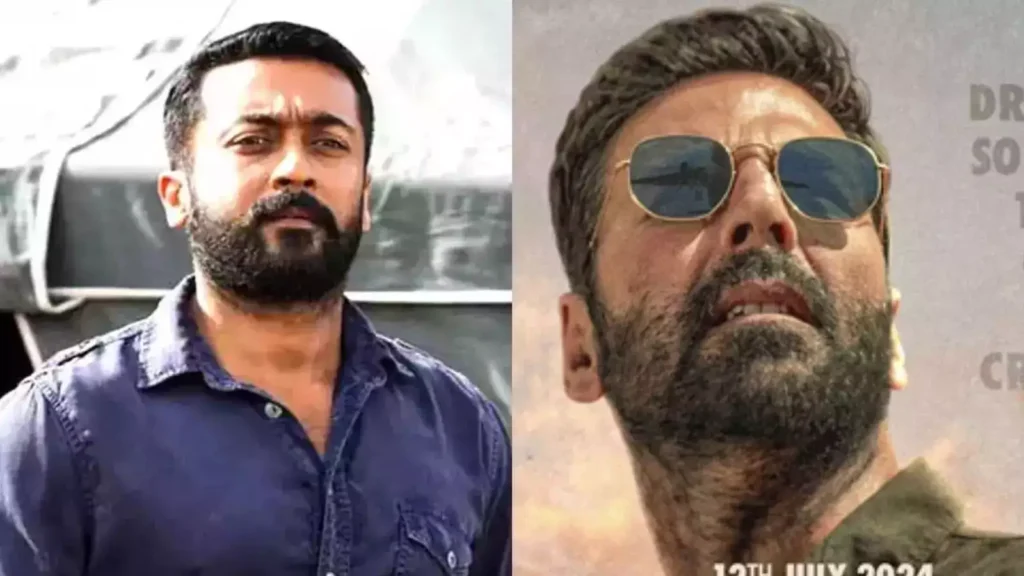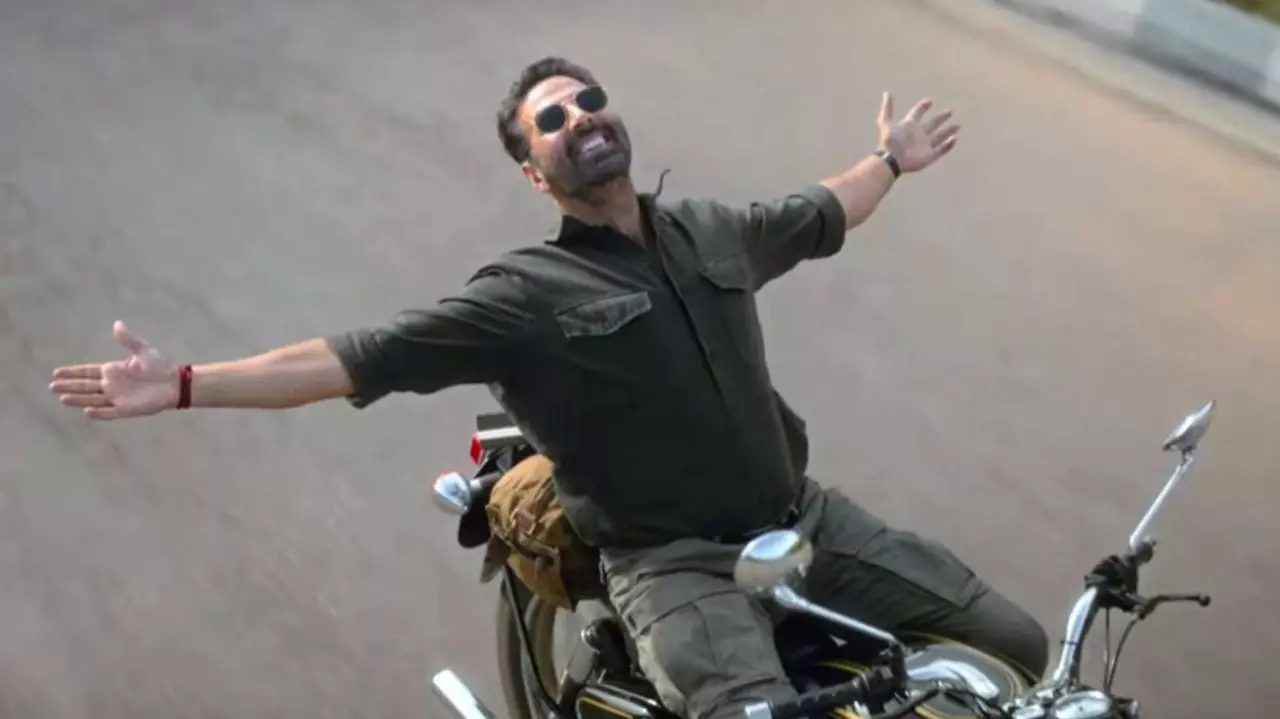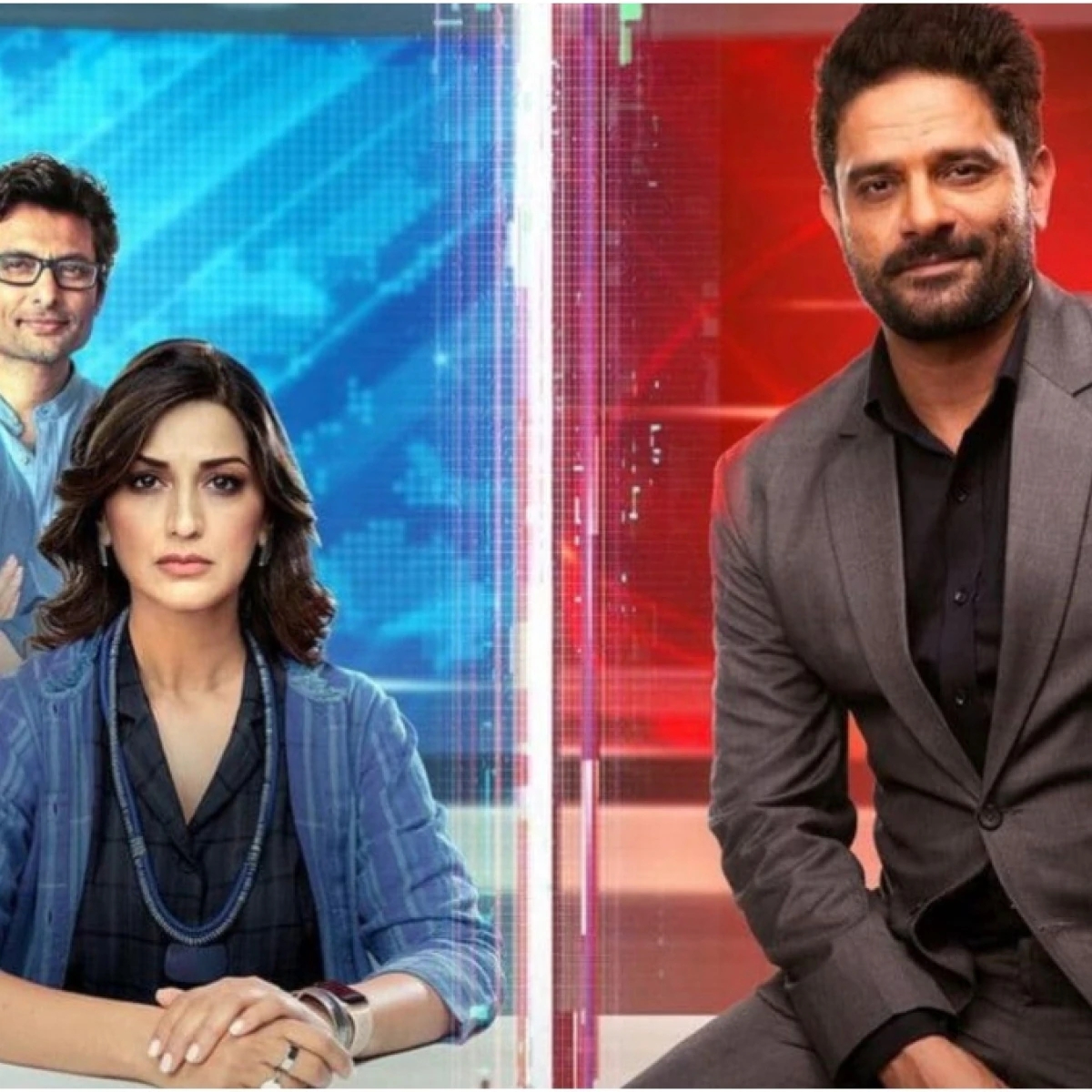
Sudha Kongara’s Sarfira, a Hindi remake of her Tamil film Soorarai Pottru, struggles to find the right balance between drama and inspiration, often descending into creaky melodrama reminiscent of 60s Bollywood weepies. The narrative, inspired by G. R. Gopinath’s memoir Simply Fly: A Deccan Odyssey, centers on Vir Mhatre (Akshay Kumar), a man from a Maharashtra village with dreams of launching India’s first low-cost airline. Alongside him is Rani (Radhikka Madan), who aspires to start her own bakery. Their journey is fraught with emotional highs and quieter struggles, particularly against aviation mogul Paresh Goswami (Paresh Rawal), who erects numerous barriers to Vir’s success.
The film opens with a scene where a potential bride’s family visits Vir, immediately establishing the stark age difference between him and Rani. This sets the tone for the film’s ongoing struggle to maintain a balance between its emotional core and the more grounded, realistic aspects of its story. Vir’s aspirations are noble, and his determination is inspiring, but the film’s execution often feels heavy-handed and melodramatic.
Akshay Kumar’s portrayal of Vir Mhatre is sincere but familiar. Kumar, who has played similar roles in films like Airlift and Toilet: Ek Prem Katha, doesn’t bring anything new to the table. His performance is competent, but it lacks the nuance needed to make Vir’s character truly compelling. The age difference between Kumar and Radhikka Madan is hard to overlook, creating an awkward dynamic that detracts from their on-screen chemistry. Their romantic scenes, intended to be heartwarming, often come across as uncomfortable.
Radhikka Madan, on the other hand, brings a refreshing energy to her role as Rani. Her character is strong-willed and independent, providing a nice contrast to Vir’s single-minded determination. Madan’s performance is one of the film’s highlights, offering a glimpse of what Sarfira could have been if it had focused more on character development and less on melodrama.
Paresh Rawal delivers a solid performance as the antagonist, Paresh Goswami. His portrayal of the aviation mogul is convincingly vile and classist, adding a much-needed layer of tension to the film. Rawal’s character, though somewhat one-dimensional, serves as a formidable obstacle to Vir’s dreams. His interactions with Kumar are some of the film’s most engaging moments, providing a sharp contrast to the otherwise overly sentimental narrative.
The film’s script, while staying true to its source material, often veers into predictable territory. The dialogue is laden with clichés, and the emotional beats feel contrived. Vir’s journey from a village dreamer to an aviation entrepreneur is riddled with setbacks, but the film’s treatment of these obstacles lacks subtlety. The constant barrage of challenges, from financial woes to bureaucratic red tape, feels repetitive and exhausting.

Despite its flaws, Sarfira has its moments. The scenes depicting the joy of ordinary people experiencing air travel for the first time are genuinely heartwarming. These moments capture the essence of Gopinath’s vision and provide a glimpse of the film’s potential. The cinematography, while not groundbreaking, effectively captures the contrast between the rural and urban landscapes, adding visual depth to the narrative.
The music in Sarfira is serviceable but unremarkable. The soundtrack, composed by a team of talented musicians, fits the film’s tone but fails to leave a lasting impression. The songs, intended to underscore the emotional highs and lows of Vir’s journey, often feel like an afterthought, lacking the memorable quality needed to elevate the film’s overall impact.
Sudha Kongara’s direction is competent but uninspired. Her attempt to balance the inspirational elements of Gopinath’s story with the film’s sentimental tone often falls flat. The pacing is uneven, with some scenes dragging on unnecessarily while others feel rushed. The film’s lengthy runtime doesn’t help, as it amplifies the feeling of repetitiveness and fatigue.
In conclusion, Sarfira aims to inspire but frequently feels like a throwback to an earlier era of filmmaking, complete with clichés and tropes. It will likely appeal to fans of Akshay Kumar and those who enjoy sentimental dramas but may leave other viewers wanting more. If you’re a fan of Kumar or appreciate melodramatic films, Sarfira might be worth watching. However, if you prefer modern storytelling, you may find it lacking.
The film’s heart is in the right place, but its execution leaves much to be desired. Sarfira serves as a reminder that even the most inspiring true stories need careful handling to translate effectively on screen. While it celebrates the spirit of entrepreneurship and the power of dreams, it does so in a way that feels dated and overly sentimental. For those looking for a fresh take on a remarkable story, Sarfira might not be the best choice, but it offers enough moments of genuine emotion to make it a passable watch.
FAQs
- Is Sarfira a faithful remake of Soorarai Pottru? Yes, Sarfira is a Hindi remake of the Tamil film Soorarai Pottru, directed by Sudha Kongara.
- Who plays the lead roles in Sarfira? Akshay Kumar stars as Vir Mhatre, with Radhikka Madan as Rani.
- What is the runtime of Sarfira? The film runs for 155 minutes.
- Is Sarfira available for streaming? Currently, Sarfira is available only in theatres, with streaming details yet to be announced.

